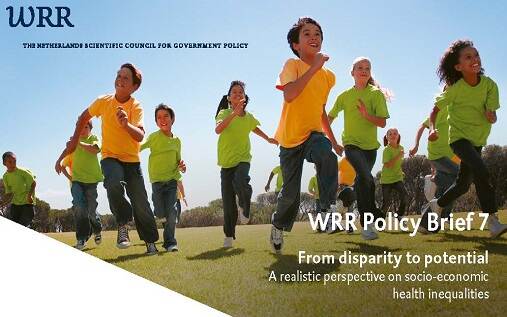From disparity to potential: a realistic perspective on socio-economic health inequalities
In this policy brief, the Scientific Council for Government Policy proposes a new perspective on ways of designing and evaluating health-prevention policy in the Netherlands.
For decades, the main aim of such policy has been to reduce health inequalities between groups of higher and lower socio-economic status. Now, several decades later, we can conclude that the Dutch have become healthier as the result of policy efforts. We are living longer, and the number of years we feel healthy is increasing. Health inequalities between socio-economic groups have hardly declined at all, however, and they have even widened in some respects.
Conclusions and policy recommendations
The WRR proposes to reinvigorate health-prevention policy by re-directing our attention from health inequalities towards health potential. From this perspective, we must consider where the greatest possible health gains lie, and how to keep health losses to a minimum.
Three priorities have emerged:
- Emphasis on early interventions (ranging from shortly before pregnancy up to the age of 18 years).
- Greater focus on those with the greatest health disadvantage (e.g. people with low socio-economic status).
- Targeting smoking, obesity/poor diet/lack of exercise and problematic alcohol consumption, all of which constitute a substantial health burden in the Netherlands.
We also advocate exploring mental health as a new and urgent priority. Mood and anxiety disorders are correlated with high disease burden, are more common within low socio-economic population segments and are becoming increasingly common amongst young people. Finally, we call for much-needed investments in research and monitoring. We know too little about the effects of policy and interventions with regard to reaching the available health potential in general, let alone differentiated according to vulnerable groups in society.
